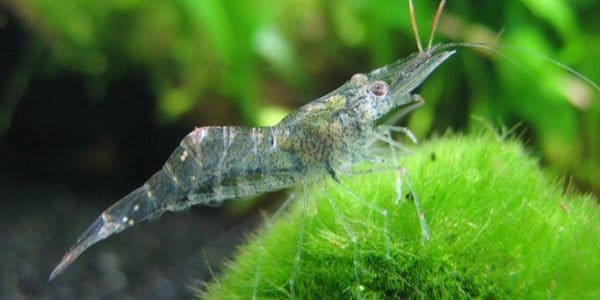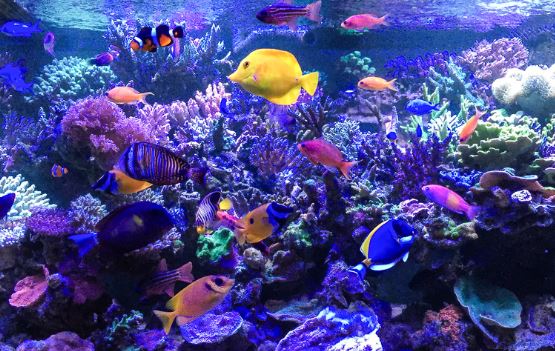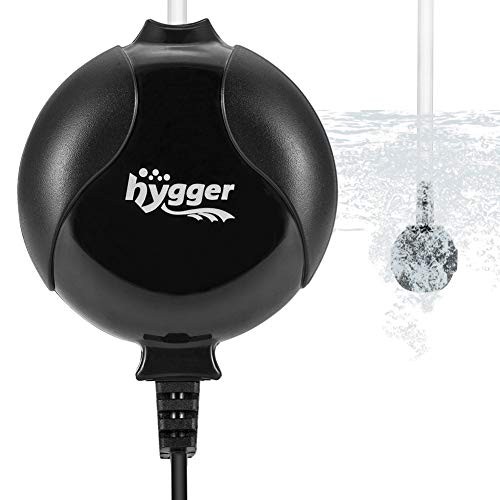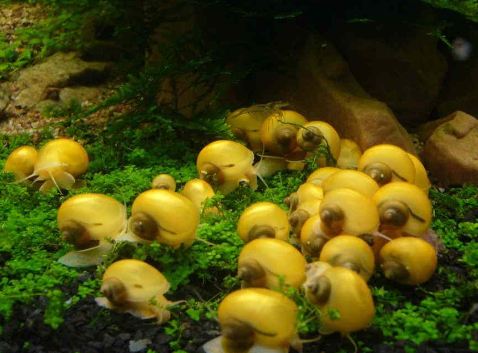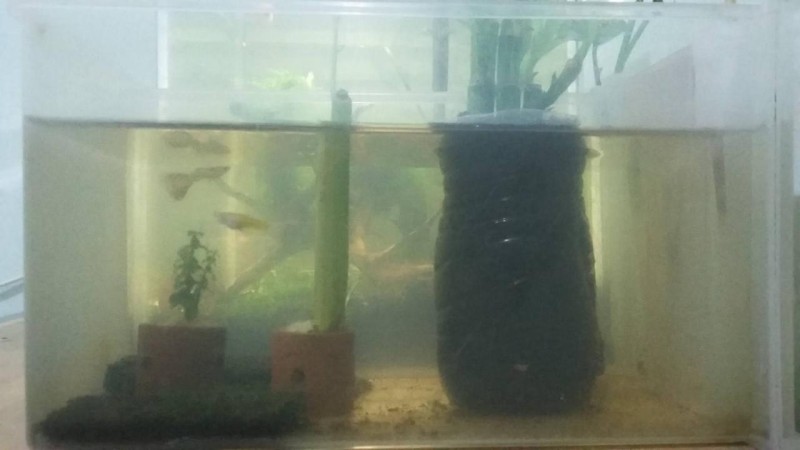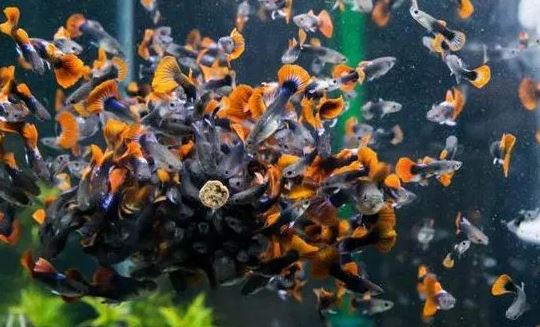Either you are looking for a new addition to your community tank or you want to enter the farm.
Freshwater aquarium shrimp are some of the most interesting and beautiful creatures you can have in a tank.
However, not all are equal. There are some things to consider before adding freshwater shrimp to any aquarium.
The first thing to decide is what variety of shrimp will work best in your tank.
Let’s take a closer look at some of the most popular aquarium shrimp to help you decide.
The 10 best freshwater aquarium shrimp
Some varieties of aquarium shrimp can be added to community tanks, while others are better establishing their own colony in a designated aquarium.
What you hope to achieve with your shrimp will determine what type of shrimp is right for you.
If you are thinking of adding a little new life to your aquarium, here are the 10 best freshwater aquarium shrimp to consider:
1. Red Cherry Shrimp
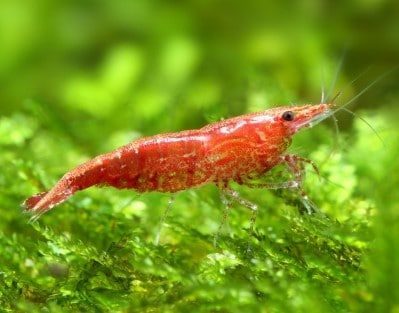
These are one of the most popular species because of their bright and beautiful color and because they are easy to care for.
They do well in community tanks as long as there are no aggressive fish present.
2. Ghost Shrimp
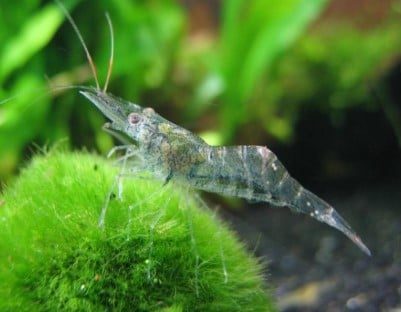
If you are looking for the easiest shrimp to take care of, it is, without a doubt, the ghost shrimp.
They are excellent for shrimp owners for the first time and are great scavengers so they are an excellent addition to a non-aggressive community tank.
3. Shrimp Snowball
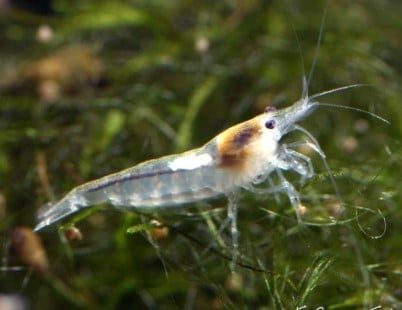
Snowball shrimp are another variety that is really easy to care for and a good option for a beginner.
They can tolerate more fluctuations in the water balance and eat almost anything. They are also fast breeders who will grow a colony in a short time.
4. Blue Tiger Shrimp
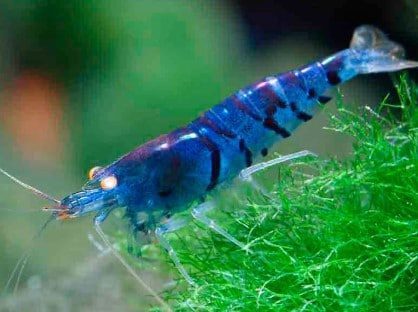
This is another magnificent shrimp that will add a touch of color to any tank.
It is easy to take care of them for a long time, although they are very sensitive to ammonia and nitrate, so it is very important not to overfeed them.
5. Panda shrimp
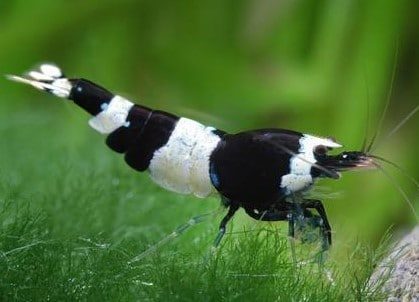
Named for their bold black and white patterns, panda shrimp are flashy and a little less common than most other shrimp that we include in our list.
They are very sensitive to water changes and reproduce very slowly.
6. Babaulti shrimp
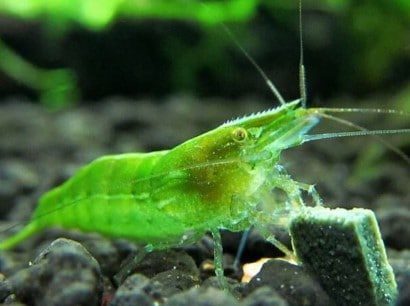
Babaulti shrimp come in a variety of colors and some striped varieties.
They are quite easy to care for and are more resistant to things that are a bit off center. They love to eat dead plants and make a great addition to a planted tank.
7. Blue Bolt Shrimp
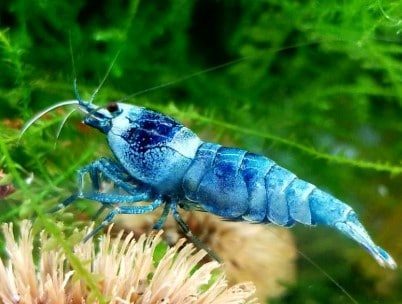
This rare species is one of the most unique and has a bright combination of blue, green and yellow colors.
They are very sensitive to ammonia, nitrites and nitrates and can be difficult to find in regular pet stores.
8. Crystal Red Shrimp
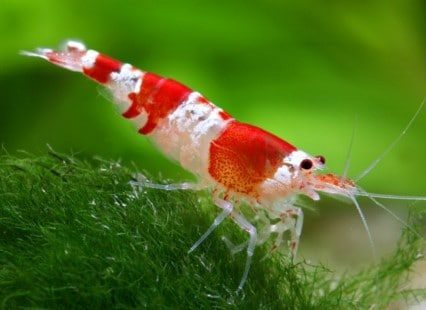
These beautiful shrimp have become very popular and experts have begun to raise them to achieve elaborate and unique patterns, so these shrimp can be a bit expensive. They are also a bit more difficult to care for.
9. Bumblebee Shrimp
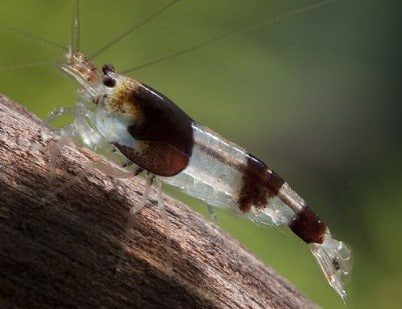
Named for its pattern of black and gold stripes, these shrimp are very sensitive to water chemistry and are not a good option for beginners.
They are a great addition to a tank with cherry red shrimp because they like the same type of water and do not intersect.
10. Amano Shrimp
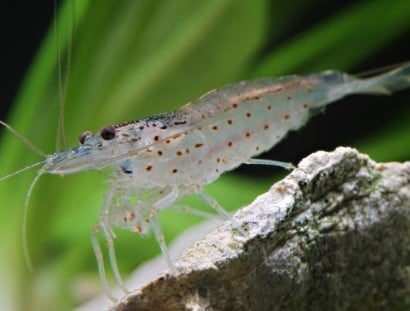
These shrimp are known for their love of eating seaweed. They are easy to care for, although not so easy to raise.
They are one of the largest varieties, growing 2 to 3 “. This makes them excellent for community tanks, as they are too large for most fish to eat.
Freshwater aquarium shrimp tank mates
Unfortunately, most of the fish are not friendly friends of the shrimp tank, especially if you plan to raise them and baby shrimp are a quick and easy meal, even for smaller aquarium fish.
There are some fish that can live peacefully with freshwater shrimp. Otto cats and small plecos have a sucker-like mouth and will leave small shrimp alone.
Of course, if you don’t plan on raising and raising young people, you have a few more options. Guppies and tetras are great tank mates. Babies can be eaten, but they are too small to disturb adult shrimp.
A good rule of thumb is that any fish that is not an aggressive breed and that has a mouth too small to eat in an adult shrimp is probably safe to add to the tank.
While most types of fish have a stereotyped temperament, remember, it really all comes down to individual fish. They also have personalities, and just because a type of fish is considered “non-aggressive” does not mean that the individual fish is not.
Snails are a great option. Some, like Ramshorns , Spixi or Trumpet red snails , can really benefit your tank. They do not eat live plants and are great scavengers. Also, the most important thing is that they don’t eat shrimp, not even babies.
Each of these types of snails has other benefits, too. Red Ramshorn will take care of unconsumed foods and even eat seaweed from the glass. They come in some bright colors and are a beautiful addition to a shrimp tank.
Trumpet snails dig into the substrate and help to oxygenate it, which can help build beneficial bacterial colonies that are so important for an environment of thriving tanks. They only go out at night and when it’s time to eat. They also clean unconsumed foods and help keep the aquarium clean.
Spixi snails are a variety of apple snails. They are much larger than the other two snails mentioned and should not be stored in small aquariums. However, if you have a large aquarium, they will take care of the algae and uningested food. In addition, they will leave the shrimp alone.
If you plan on keeping the dwarf shrimp but not raising them or raising the young, there are many fish that are excellent tank mates. Endlers Livebearers, Guppies, many Tetras species, and most Killifish species make great cohabiting.
Again, it is very important to consider the aggressiveness of the fish you are trying to put with the shrimp.
Another thing to consider is size. If a non-aggressive fish has a mouth less than half the size of an adult shrimp, the fish cannot eat it. That said, if they are aggressive, they can still injure the shrimp or cause a lot of stress, another reason why aggressive fish should be avoided.
How to care for freshwater aquarium shrimp?
To understand the basic care of these shrimp, it is useful to consider where they live in the wild. Most popular freshwater shrimp breeds originated in East Asia.
Ghost shrimp, which are native to the southern United States, are the only obvious exception.
Their origin really affects the type of environment they like, especially when it comes to water temperature and pH.
Let’s start with a little more information about the type of environment in which aquarium shrimp live.
Tank and water requirements
Larger species require aquariums of at least 10 gallons, while smaller shrimp can thrive in 10 gallons or less. Live plants are recommended and you must ensure that the substrate is designed to hold shrimp.
Be careful with the filter, too. Some intakes may be a bit too potent and, in fact, absorb shrimp. One solution is to cover the filter with a screen or switch to an air-operated sponge filter.
Although the specific requirements vary for each species, there are some common things that apply to all of them. First, ammonia and nitrites must be maintained at undetectable levels and nitrates must remain below 10 ppm.
The pH requirements vary from one species to another. For example, the ghost shrimp, the amane and the bamboo shrimp are not demanding with the pH and will work well as long as they do not reach any extremes. On the other hand, glass shrimp need a low pH, while Caridina shrimp need a higher pH.
Research the type of shrimp you plan to buy to know for sure what the water chemistry should be, especially if you already have an existing tank and cannot easily make changes.
Once you have added shrimp to the tank, a partial water change is required every week. Start with a 10% change in one week, then make 25% in the next, and repeat.
Feeding
Freshwater shrimp are seaweed eaters, so you should not put them in a new aquarium. Shrimp eat the biofilm that forms in an aquarium after being cycled several times and a healthy shrimp community can survive only with this.
However, once the shrimp population grows, they will require supplementary food. The good news is that they are not demanding and eat almost anything. There are lots of different flakes and bites available commercially or you can try very small pieces of pear, spinach or cucumbers.
An important thing to remember is that it is always better to feed shrimp infrequently than to overfeed them. Overfeeding can cause many problems and the shrimp will be fine if it is slightly malnourished.
As we mentioned, when the shrimp population is small, they can survive with the biofilm that grows naturally in the tank. Eventually, however, you will need to add food.
There is no definitive answer on when to start feeding. Once the shrimp population grows, take a test by offering them a small amount of food. Remove any food that has not been consumed after an hour to avoid overfeeding and keep the tank clean. If they have eaten, you can start feeding them.
Start by giving them food only a few times a week. Try different amounts until you find out how much they need. If the food has gone very fast, add a little more. If there is much left after an hour, you have probably given them too much.
Remember that if it is breeding, the shrimp population can grow quite quickly, which means that food requirements will change constantly. The important thing is not to overfeed, as it leads to contaminated water and could kill shrimp.
conclusion
As you can see, there are many wonderful options available when it comes to freshwater shrimp. Before deciding which one is right for your aquarium, there are some things to consider.
Remember, not all shrimp do well in a community tank, especially if there are aggressive fish in the mix because they are more likely to eat them. Choose a type of shrimp that works with what you already have.
Also, if you were thinking of raising shrimp, be sure to get a guy who does it easily and quickly. Some shrimp are difficult breeders and can cause you a difficult time, especially if you are the owner of shrimp for the first time.
Shrimp are an interesting and often beautiful addition to the environment of a tank. In addition, most species eat algae, debris and dead plant material and will actually help keep the tank healthy so that everything that lives in it can thrive.
